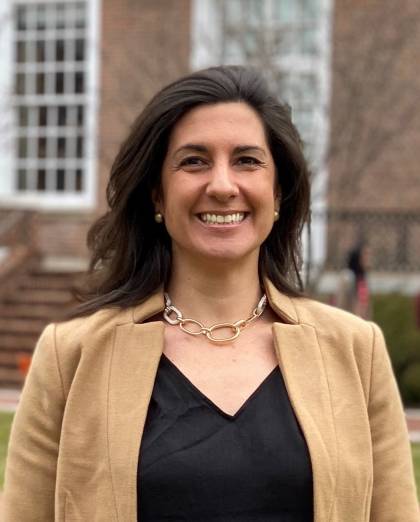A Johns Hopkins materials science and engineering professor is leading a multi-university team of researchers with a mission to expedite the process by which new and important materials are created for use by the U.S. Navy in a variety of applications, from hypersonic vehicles to batteries.
Mitra Taheri's team includes colleagues from Johns Hopkins, University of Virginia, Northwestern University, and Arizona State University, as well as those at the University of Paris-Est, University of Toronto, and Australian National University. Experts at the National Institute of Standards and Technology, Brookhaven National Laboratory, Stanford National Accelerator Laboratory, and the University of Toronto are also collaborators.
"Our goal is to help develop these new alloys for use in applications like aircraft and ground and sea vehicles, as well as technology for space exploration," said Taheri, director of Johns Hopkins' newly constructed Materials Characterization and Processing center. The MCP provides analytical instrumentation, preparation equipment, and processing capabilities for the development and characterization of new materials. "These new materials do not have limited applications, though. In addition to aerospace and propulsion applications, we see possible applications in sustainable energy, quantum devices, armor, and more, which is what makes this project so exciting for us."
Along with other leading experts from higher education, industry, and the government, Taheri is a co-author of a recent study that focused on defining pathways to unlocking the potential of high entropy alloys.
"The study is basically a 'call to action' to accelerate research into these revolutionary new materials and their implementation," Taheri said of the report, which was organized by The Minerals, Metals & Materials Society. "Our goal was not only to give the materials science research community information and resources, but also to make recommendations so that we can see real progress in this area in the future: in the next three to five years."

Image caption: Mitra Taheri
Taheri's team is using a combination of computational modeling, machine learning, high-throughput exploration, and artificial intelligence–guided experiments to tailor these new alloys to the extreme environments in which they will be used. Learning more about the reactions of the materials they are studying will enable the team to identify those which are viable for applications in extreme environments, she says.
"Corrosion and high-temperature oxidation like that experienced by a spacecraft on reentry into the earth's atmosphere can cause damage to expensive technology and endanger the lives involved in any human-run operation," Taheri explained. "Practically speaking, materials degradation is a billion dollar issue 'on the ground,' and deployment of these new alloys could not only save many millions of dollars, but also could allow for more efficient power generation and vehicle use on land and at sea."
The team's efforts are supported by a $7.5 million Office of Naval Research Multi-University Research Initiative award, as well as additional collaborative international efforts funded through ONR Global.
She and her team will use the MCP's equipment and capabilities for high-throughput experiments and computing to fast-track the development of successful combinations of materials ready for testing. For the Navy, this type of testing is critical; the sooner new alloys can be developed and tested, the sooner applications for the materials can be developed.
"This is really the future of intelligent materials design, as inspired by the Materials Genome Initiative," Taheri said. "We are combining next generation tools for both materials discovery and in-situ characterization methods with artificial intelligence and machine learning, which is allowing us to monitor hundreds of alloys at a time, at the atomic level, with high throughput and autonomous methodologies. We have already discovered new alloys through this process. This is really the cutting edge of how we design, discover, and develop materials for the future."
She said that the work her team is doing in this Navy-funded MURI has the potential to impact not only the Department of Defense and other stakeholders, but will also pave the way for a future of smarter, efficient, and precision materials design and development through autonomous materials research.
"Iron man would be proud of us, I think," she said.
Posted in Science+Technology








